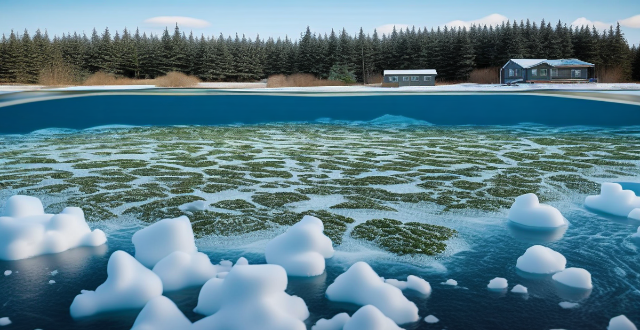The greenhouse effect, amplified by human activities, leads to global warming which causes ice caps to melt, leading to sea level rise, climate change, and ecosystem disruption.

The Relationship between the Greenhouse Effect and Ice Caps Melting
The greenhouse effect is a natural process that occurs when certain gases in the Earth's atmosphere trap heat from the sun, preventing it from escaping back into space. This process helps to maintain the planet's temperature within a range suitable for life. However, human activities, such as burning fossil fuels and deforestation, have increased the concentration of these greenhouse gases, leading to an enhanced greenhouse effect and global warming.
How Does Global Warming Affect Ice Caps?
Increased Temperatures
- Melting Point of Ice: Ice caps are composed of glaciers and ice sheets, which are sensitive to changes in temperature. As global temperatures rise due to the enhanced greenhouse effect, the melting point of ice is reached more frequently, causing ice caps to melt at an accelerated rate.
- Albedo Effect: Ice has a high albedo, meaning it reflects a significant amount of sunlight back into space. When ice caps melt, they reveal darker surfaces (such as ocean water or land) that absorb more sunlight, further increasing temperatures and creating a positive feedback loop that accelerates ice cap melting.
Ocean Warming
- Warmer Seawater: The oceans absorb much of the excess heat trapped by greenhouse gases. Warmer seawater can melt ice shelves from below, which are floating extensions of ice caps that help to slow the flow of continental ice into the ocean.
- Sea Level Rise: As ice caps melt and add water to the oceans, sea levels rise. This can lead to the submersion of coastal regions and further destabilization of remaining ice caps.
Changes in Precipitation Patterns
- Ice Formation: Snowfall replenishes ice caps during colder months. Changes in precipitation patterns due to global warming can alter the balance between snow accumulation and melting, potentially reducing the amount of snow that falls on ice caps.
- Ice Cap Hydrology: Melting ice caps can also affect regional hydrology, including river systems that feed into or originate from ice caps. This can further impact the stability and replenishment of these frozen bodies.
Consequences of Ice Caps Melting
Sea Level Rise
- Coastal Flooding: As sea levels rise, low-lying areas are flooded more frequently, leading to displacement of people and damage to infrastructure.
- Loss of Ecosystems: Coastal ecosystems such as mangrove forests and coral reefs are threatened by rising sea levels, which can cause them to drown or become cut off from necessary freshwater sources.
Climate Change
- Extreme Weather Events: Melting ice caps contribute to changes in global weather patterns, potentially leading to more frequent and severe extreme weather events like storms, droughts, and heatwaves.
- Global Climate Systems: The loss of ice affects global climate systems, including ocean currents and wind patterns, which can have far-reaching consequences for climate worldwide.
Ecosystem Disruption
- Habitat Loss: Species that depend on cold environments provided by ice caps, such as polar bears and certain types of seals, face habitat loss as their icy realms disappear.
- Food Web Changes: The reduction of ice caps can lead to changes in marine food webs, affecting species at all trophic levels from plankton to top predators.
In conclusion, the relationship between the greenhouse effect and ice caps melting is one of cause and effect. The enhanced greenhouse effect, largely due to human activities, leads to global warming, which directly causes ice caps to melt at an accelerated rate. This process has profound implications for sea level rise, climate change, and ecosystem disruption. Mitigating greenhouse gas emissions is crucial to slow down or halt these processes and protect our planet's fragile cryosphere.